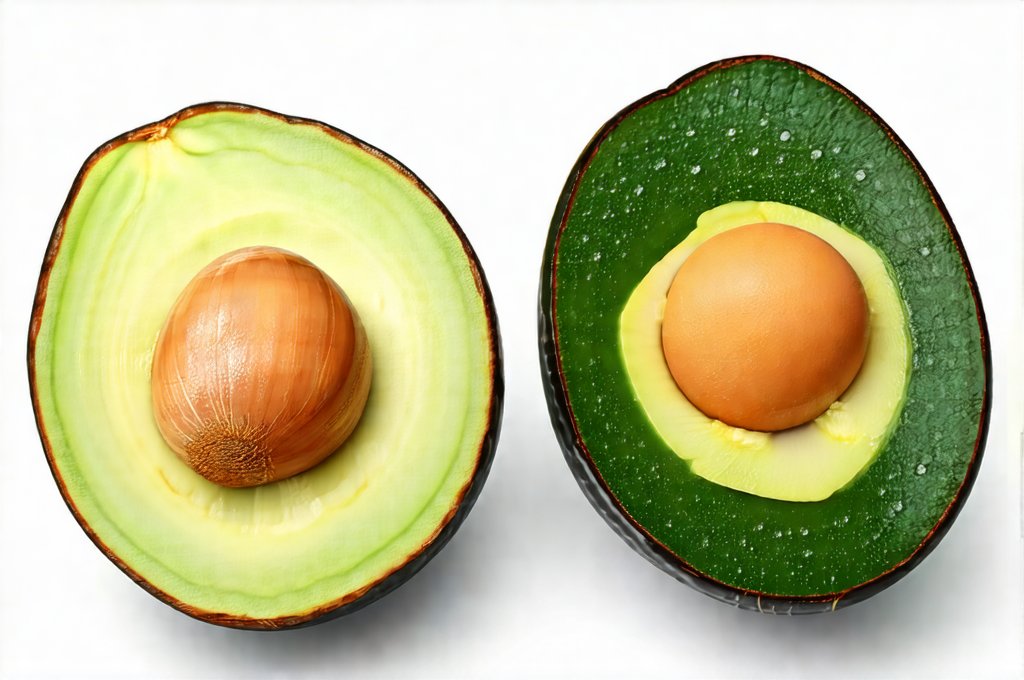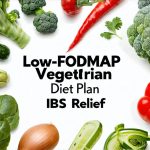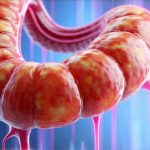The low-FODMAP diet is frequently recommended for individuals experiencing digestive discomfort, particularly those diagnosed with Irritable Bowel Syndrome (IBS). It’s not a weight loss diet, nor is it intended as a permanent lifestyle change; rather, it’s an elimination diet designed to identify specific carbohydrates that may be triggering gastrointestinal symptoms. These carbohydrates – Fermentable Oligosaccharides, Disaccharides, Monosaccharides and Polyols (FODMAPs) – are poorly absorbed in the small intestine, leading to fermentation by gut bacteria, which can cause gas, bloating, abdominal pain, diarrhea, or constipation. Successfully navigating this diet requires understanding that initial changes to stool consistency and frequency are incredibly common, even expected, during the transition period. These alterations aren’t necessarily a sign of failure but often indicate your digestive system is responding to the reduced fermentable carbohydrate load. Considering how to transition to a gut friendly diet can be beneficial during this period.
The dietary shift itself can be quite substantial, requiring careful reading of food labels and potentially eliminating many commonly consumed foods. Because of this, changes in bowel habits are almost inevitable as the gut microbiome adjusts. Individuals may experience a temporary worsening of symptoms before improvement occurs – this is often referred to as a ‘die-off’ effect, though its scientific basis is still debated. It’s important to remember that every individual responds differently; there’s no one-size-fits-all experience when it comes to low-FODMAP diet transitions. Patience and careful monitoring of symptoms are crucial for success. This article will explore the common stool changes experienced during this transition, what they signify, and how to manage them effectively. Managing digestive health is key to successful implementation.
Understanding Initial Stool Changes
The initial phase of a low-FODMAP diet often involves a significant reduction in fiber intake, as many high-fiber foods also contain FODMAPs. Fiber plays a critical role in bulking up stool and regulating bowel movements. Reducing it suddenly can lead to constipation for some individuals. Conversely, others might experience diarrhea. This seemingly contradictory response is due to the varied effects of eliminating different FODMAP groups and individual gut sensitivities. For example, removing fructans (found in wheat, onions, garlic) might reduce gas and bloating leading to firmer stools, while eliminating lactose (dairy products) could alleviate diarrhea for those with lactose intolerance but also remove a source of hydration that kept things moving regularly. Tips for a low-FODMAP diet can help you navigate these challenges.
Furthermore, the gut microbiome undergoes significant shifts during this dietary change. The bacteria that thrive on FODMAPs decrease in number as their food source is removed, and other bacterial populations may increase or decline depending on the foods consumed instead. This microbial shift can temporarily disrupt the delicate balance within your digestive system, leading to altered stool consistency and frequency. It’s not uncommon for individuals to experience a period of fluctuating bowel habits – alternating between constipation and diarrhea – as their gut microbiome re-establishes itself. The key is to observe these changes without panic and understand they are often temporary. Understanding evaluating gut response can help you monitor progress.
Finally, it’s important to acknowledge the psychological impact of dietary restrictions. Stress and anxiety surrounding food choices can also contribute to digestive upset and altered bowel movements. Taking a mindful approach to eating and focusing on permitted foods can help mitigate this effect. Maintaining adequate hydration is equally essential, as dehydration can exacerbate both constipation and diarrhea.
Navigating Constipation During Low-FODMAP
Constipation is a frequent complaint during the initial stages of a low-FODMAP diet. The reduction in fiber intake, coupled with decreased fermentation (which naturally stimulates bowel movements), often contributes to this issue. However, it’s vital not to self-treat with laxatives without first assessing dietary factors and hydration levels. Here are some strategies for managing constipation while on the diet:
- Increase low-FODMAP fiber sources: Focus on incorporating permitted high-fiber foods into your diet. Good options include carrots, potatoes, spinach, zucchini, rice, oats (in moderate amounts), and chia seeds/flax seeds (in small portions).
- Hydration is paramount: Drink plenty of water throughout the day – aim for at least 8 glasses. Water helps soften stool and facilitates bowel movements. Consider adding a squeeze of lemon or cucumber slices to make it more palatable.
- Gentle exercise: Regular physical activity stimulates intestinal motility and can help alleviate constipation. Even a short walk each day can make a difference.
If constipation persists despite these measures, consider consulting with a registered dietitian specializing in IBS. They can provide personalized guidance on optimizing your diet and identifying any underlying factors contributing to the problem. Avoid relying solely on fiber supplements without professional advice, as some may contain FODMAPs or exacerbate symptoms. Digestive assessments can help pinpoint specific issues.
Addressing Diarrhea During Low-FODMAP
While constipation is common, diarrhea can also occur during a low-FODMAP transition. This might happen if you’ve been consuming large quantities of sorbitol or mannitol (polyols found in certain fruits and artificial sweeteners) prior to the diet, or if your gut is particularly sensitive to changes in fermentation. Diarrhea can be equally distressing and requires careful management.
- Identify potential triggers: Review your food diary and identify any low-FODMAP foods that seem to worsen diarrhea symptoms. Some individuals may react even to small amounts of permitted foods.
- Focus on binding foods: Incorporating binding foods like plain rice porridge, bananas (ripe but not overly ripe), or boiled potatoes can help solidify stool. These are generally well-tolerated during the initial phases of the diet.
- Electrolyte replacement: Diarrhea can lead to dehydration and electrolyte imbalances. Sip on oral rehydration solutions (low-FODMAP options available) or consume foods rich in electrolytes, such as coconut water (in moderation).
Diarrhea that is severe, persistent, or accompanied by other symptoms like blood in the stool should always be evaluated by a healthcare professional. It’s essential to rule out any underlying medical conditions contributing to the problem. When bloating calls for more than diet changes, seek professional advice.
The Role of Gut Microbiome Rebalancing
The low-FODMAP diet fundamentally alters the environment within your gut. By reducing the availability of fermentable carbohydrates, you’re essentially ‘starving’ certain bacterial populations while allowing others to flourish. This rebalancing process is what ultimately leads to symptom improvement for many individuals with IBS. However, it’s not always immediate and can sometimes manifest as temporary digestive upset.
- Probiotics and Prebiotics (Carefully): While the initial elimination phase focuses on reducing FODMAP intake, introducing carefully selected probiotics and prebiotics during the reintroduction phase is crucial for long-term gut health. However, many probiotic supplements contain inulin or other FODMAPs, so choose wisely and consult with a dietitian. Prebiotics are best introduced slowly as tolerance allows.
- Diversity matters: The goal isn’t necessarily to eliminate all fermentable carbohydrates forever but to identify which ones trigger your symptoms and reintroduce tolerated foods gradually. A diverse gut microbiome is generally considered healthier, so restricting unnecessarily can be detrimental in the long run.
- Long-term strategy: Think of the low-FODMAP diet as a diagnostic tool rather than a permanent solution. The aim is to identify your specific triggers and build a sustainable dietary pattern that minimizes symptoms while allowing for a varied and enjoyable food experience.
It’s essential to remember that managing stool changes during a low-FODMAP transition requires patience, self-awareness, and potentially the guidance of a healthcare professional. By understanding the underlying mechanisms driving these changes and implementing appropriate strategies, you can navigate this dietary approach effectively and improve your digestive health. What to expect from comprehensive stool analysis will provide additional insight.


















